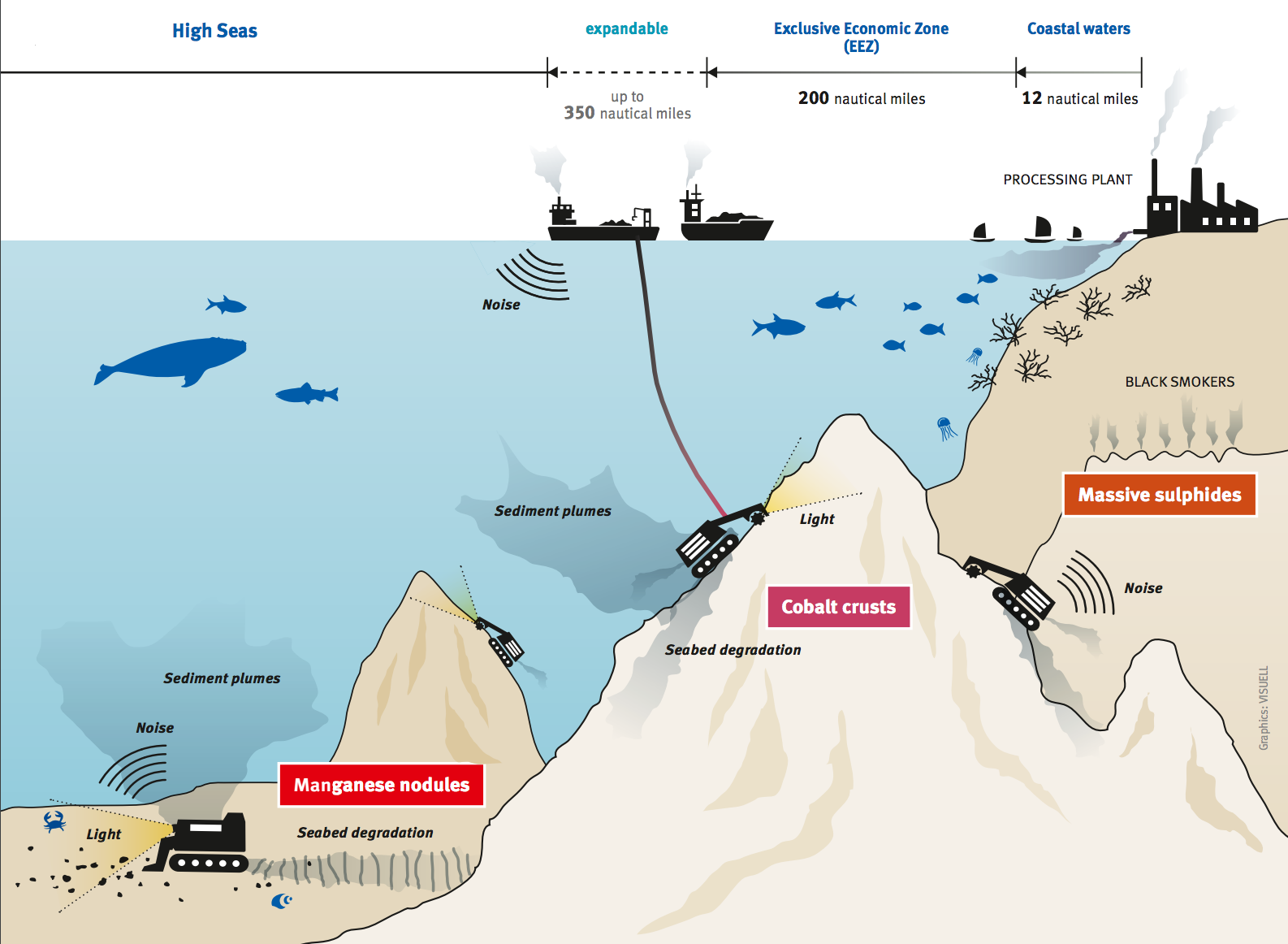Seabed Mining – What is at risk?
Human life and the environment at risk
At this stage it is almost impossible to accurately estimate the environmental impacts, since far too little is known about the ecosystem of the ocean depths. “We know more about the surface of
Mars and Venus than we know about the deep ocean floor, broadly speaking it is a great unknown,” said Dr Chris Yates, geologist with the Mineral System Science Program of the Commonwealth Scientific and Industrial Research Organisation (CSIRO, Australia) in 2012.
Little has changed since then. Environmental experts, however, share the view that deep seabed mining would represent a severe and extremely risky form of intervention in the ecosystems of the oceans, with unforeseeable consequences. According to scientific evidence, regeneration phases take approximately 25 times as long in the ocean depths as in ecosystems on land.
The following serious damage to the ecosystems of the ocean depths can be expected:
• long-term degradation of the seabed, and with it the fauna and flora living on or near the seabed, with their unique and largely unexplored diversity of corals, sponges, fish and other creatures;
• the formation of huge sediment plumes that will be transported by currents, causing widespread damage in a radius of hundreds of kilometres;
• the generation of noise, light and vibrations by giant remotely controlled equipment on the seabed, some of it weighing as much as 250 or even 310 tonnes, with adverse effects especially on large sea mammals such as whales and dolphins, causing them irreparable damage.
Our oceans are already massively stressed by increasing shipping, overfishing, oil and gas extraction, and enormous volumes of discarded plastic. Deep seabed mining would unavoidably increase the amounts of pollutants ending up in the sea. The anticipated damage to fish stocks would threaten the environmental asset base of many Pacific Islanders, many of whom still live in a subsistence economy based mainly on fishing, while some also gain income from tourism. An intervention as profound as is to be expected in deep seabed mining would rob Pacific Islanders of their economic asset base.
The ocean is part of the spiritual and cultural space the predominantly indigenous peoples of the Pacific inhabit. Deep seabed mining could also mean the loss of their traditions and culture. The processing plants on land would pose an additional risk. Experience with conventional terrestrial mining, and offshore oil and gas extraction, shows that even when stringent safeguards are applied, environmental damage and resulting human rights violations
cannot be fully ruled out. The rights that are endangered include the right to health and the right to an adequate standard of living, the latter covering the right to food and clean drinking water.
These rights are cemented in the Universal Declaration of Human Rights and in further human rights conventions of the United Nations. In contrast to the impacts of deep seabed mining, the effects of land-based mining are generally visible and are frequently highlighted by the activities of civil society organisations. The potential damage to the oceans, on the other hand, is difficult for civil society organisations to expose and will therefore remain hidden for long periods, in which nothing can be done about it. Furthermore, the ocean depths play an important role in the global carbon cycle, and thus in the climate system and ever-advancing climate change. A large part of the carbon dioxide emissions caused by human activity is absorbed by the oceans. The direct influence of deep seabed mining on this sink function has yet to be researched. The destruction of the ecosystems in the ocean depths could seriously disrupt the carbon cycle. In the words of the German UNESCO Commission, “[o]ceans cover 70 per cent of the planet. They are the largest providers of oxygen; they create our climate and can be the source of natural disasters. The oceans are gravely endangered due to overfishing, acidification, the overuse of fertilisers and the dumping of waste. We need greater awareness, clear rules and evidence-based governance in
order to combat these developments.” The commission rightly points to the fact that one of the 17 global Sustainable Development Goals (SDGs) – SDG 14 – is dedicated explicitly to the protection of the oceans:
GOAL 14: Life under water
Conserve and sustainably use the oceans, seas and marine resources for sustainable development.


0 Comments